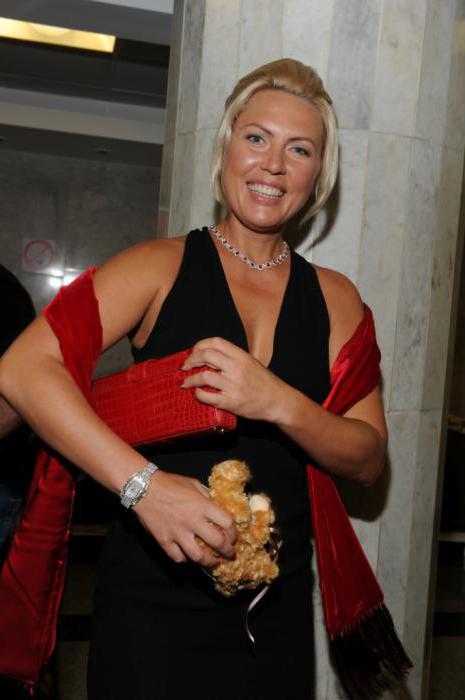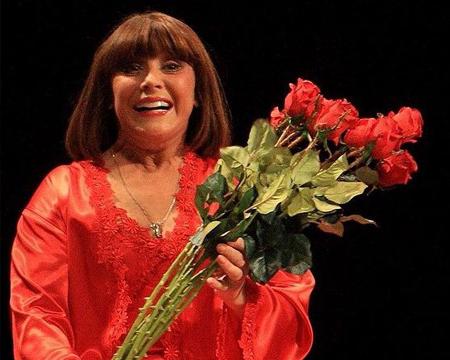Natalia Goncharova - abstract artist,which represents a fairly rare female avant-garde art. Her life and work are a clear reflection of the development trends of society and culture of the 20th century. Her paintings today cost a lot of money, and at one time she was persecuted and criticized for her special view of the world.

Childhood and origin
Natalia Goncharova was born on June 4, 1881 inthe village of Ladyzhino, Tula region, in the estate of his grandmother, which was located near Yasnaya Polyana. According to her father, Natalia goes back to the family of Goncharovs, where Pushkin’s wife came from, the namesake of the artist Natalia Goncharova. Their family comes from the merchant Afanasy Abramovich, the founder of the linen factory in the Kaluga region. Natalia's grandmother came from the family of the famous mathematician P. Chebyshev.
The artist’s father, Sergei Mikhailovich, wasarchitect, representative of Moscow Art Nouveau. Mom Ekaterina Ilyinichna is the daughter of a Moscow professor at the Theological Academy. The girl spent her childhood on an estate in the province, and this forever instilled in her a love of rural life. Contact with folk art left a mark in her worldview, and it is precisely with this that art historians explain the decorative effect of her work. When the girl was 10 years old, the family moved to Moscow.
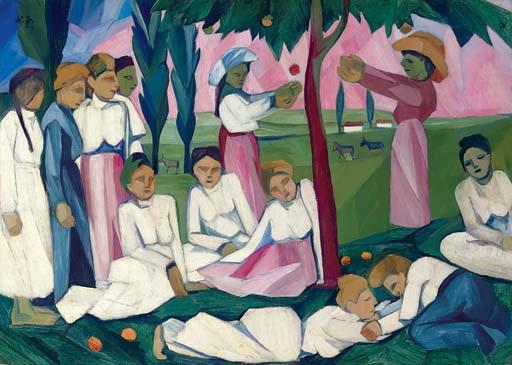
Study
Upon arrival in Moscow, Natalia Goncharova, an artist inthe future, enters the girls' gymnasium, which he graduates in 1898 with a silver medal. Despite the fact that the girl had undoubted penchant for drawing, she did not seriously consider the possibility of becoming an artist in her youth. At the end of the gymnasium, she looked for herself, tried to work in medicine, tried to study at the university, but all this did not interest her. In 1900, she became very interested in art and a year later entered the Moscow School of Painting, Sculpture and Architecture in the sculpture class of S. Volnukhin and P. Trubetskoy.
Studying was good for her, in 1904 she evenreceived a small silver medal for her work, but soon left school. In 1903, she went on a creative business trip to the Crimea and Tiraspol, where she earned by drawing posters for an agricultural exhibition, and also wrote sketches and watercolors in an impressionistic manner.
The artist Mikhail Larionov advised her not tospend time on sculpture and painting: “Open your eyes to your eyes. You have a talent for color, and you are engaged in form, ”he said. The meeting with Larionov changed her life and intentions, she begins to write a lot and look for her style.
In 1904, Goncharova returned to study, butgoes to the painting studio to K. Korovin. The girl did not abandon the sculpture and in 1907 received another medal. In 1909, Natalia finally decided to stop her studies, considering other horizons in front of her.
Luchism
Together with Mikhail Larionov Natalia Goncharova,the artist, whose biography is now forever associated with new art, in the early 1910s became the founder of the avant-garde movement in painting - luchism. This trend called for a return to the original sources of ancient Russian art. Particular importance was attached to the rhythm of folklore, music opened access to the historical memory of man and awakened artistic imagination.
A man, according to Goncharova and Larionov,perceives the world as a collection of intersecting rays, and the artist’s task is to convey this vision using colored lines. Goncharova's early work was very vibrant and expressive. She not only imbued with the idea of luchism, but also sought to embody all the new ideas that culture then abounded in.
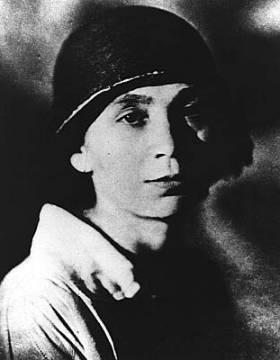
Creative biography
Since 1906, Natalia Goncharova, artist, photowhose works today can be seen in the catalogs of the most prestigious museums in the world, begins to write very intensively. A trip to Paris, where she was inspired by the work of the Fauvists and P. Gauguin, makes her move away from Impressionism and turn her eyes to new trends. A keen artist tries herself in primitivism ("Washing the Canvas" 1910), cubism ("Portrait of M. Larionov", 1913), abstraction.
Much later, art critics will say thatsuch throwings did not allow her to develop the full power of her talent. Moreover, she is very productive and active. From 1908 to 1911 she gave private lessons in the art studio of the painter I. Mashkov. Natalia also returns to arts and crafts: writes drawings for wallpapers, draws up friezes of houses. The artist participates in the activities of the Futurist Society, collaborating with V. Khlebnikov and A. Kruchenykh.
In 1913, Goncharova starred inexperimental film "The Lady in the Cabaret of Futurists No. 13", the tape was not preserved. The only surviving frame captures the naked Goncharova in the arms of M. Larionov. In 1914, she again visited Paris at the invitation of S. Diaghilev. In 1915, the artist faced serious censorship difficulties. In 1916 he received a proposal to paint the church in Bessarabia, but the war prevented these plans.
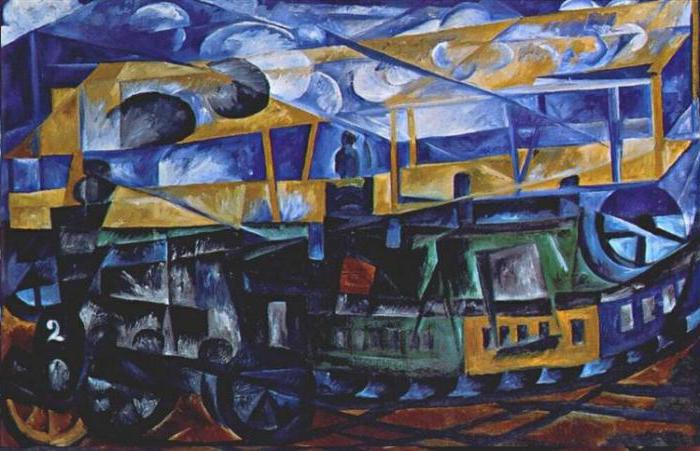
Exhibition activity
Goncharov exhibited a lot in the 1910s,participates in the activities of art societies. In 1911, she together with M. Larionov organized the exhibition “Jack of Diamonds”, in 1912 - “Donkey's Tail”, “Golden Fleece Salon”, “World of Art”, “Targets”, “No. 4”. The artist was part of the Blue Horseman society in Munich. Goncharova actively supported numerous actions and undertakings of that time. Together with the futurists, she walked around St. Petersburg with a painted face, starred in their films. Almost all of these events, including exhibitions, ended in scandals and police calls.
In 1914, a large personalan exhibition of works by Goncharova, 762 paintings were exhibited here. But there was also a scandal: part of the work was withdrawn on charges of immorality and an insult to public taste.
The reason for such excesses on the avant-gardeevents was often Natalia Goncharova, an artist whose exhibition of works was last held in Russia in 1915. After that, Russia never again saw personal exhibitions of this original artist.

Censorship and restrictions
In 1910, at the exhibition of the Free SocietyAesthetics Natalia Goncharova, an artist whose works have been repeatedly recognized as immoral, shows several paintings with naked women in the spirit of the Paleolithic Venus. The works were arrested on charges of pornography, which was not typical for tsarist Russia of the period when works of art did not fall under censorship. After another scandal, Natalia’s father writes an open letter to the newspaper, in which he criticized the critics that they did not see the living spirit of creativity in the daughter’s works.
In 1912, at the famous exhibition Donkeytail ”Natalia Goncharova, an artist with an established avant-garde reputation, puts out a cycle of 4 paintings“ Evangelists ”. This work provoked fury among the censors with its non-trivial depiction of saints. In 1914, 22 works were removed from the artist’s personal exhibition, after which the censors even went to court, accusing Goncharova of blasphemy over the shrines. Many artists of that time stood up for her: I. Tolstoy, M. Dobuzhinsky, N. Wrangel. Thanks to lawyer M. Khodasevich, the case was won, the censorship ban was lifted. Goncharova complained to friends that they did not understand her, that she was driven by true faith in God.
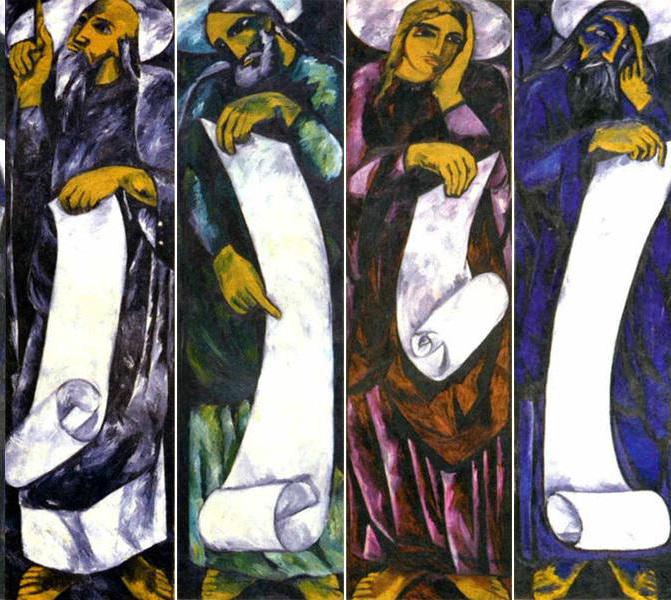
Goncharova - illustrator
Natalia Goncharova - the artist who triedthemselves in different forms of manifestation. Her friendship with the futurists led her to book graphics. In 1912, she draws up the books of A. Kruchenykh and V. Khlebnikov, Mirskontsa, and The Game of Hell. In 1913 - the work of A. Kruchenykh “Blast”, “Hermits. Deserts ”and the collection“ Zadok of judges No. 2 ”of the book of K. Bolshakov. Goncharova was one of the first book graphics in Europe to use collage technique. In some of her works, she appears on an equal footing with writers.
For example, book A.Twisted "Two poems" on seven pages posted 14 drawings, which to the same extent form the idea of the work, like words. Later, abroad, N. Goncharova created illustrations for the “Tale of Igor's Campaign” for the German publishing house and for “Tales of Tsar Saltan”.

Emigration
In 1915, Goncharova Natalya Sergeevna(avant-garde artist) together with his life partner M. Larionov leaves for Paris to work with the Sergey Diaghilev Theater. The revolution prevented them from returning to Russia. They settled in the Latin Quarter of Paris, where they visited the whole color of Russian emigration.
In France, the couple organically joined the circle of localbohemians. Young people arranged charity balls for aspiring painters. Goncharova-Larionov’s house was often visited by Nikolai Gumilev, later Marina Tsvetaeva, who became very friendly with Natalya Sergeevna.
Goncharova worked a lot during the forced yearsemigration, but she didn’t survive such a creative explosion as in the 10s in Russia. Although her cycles “Peacocks”, “Magnolias”, “Spiky Flowers” speak of her as a mature and developing painter.

Theatrical works
Natalia Goncharova - artist, theater for whichbecame a real vocation. She worked with A. Tairov at the Chamber Theater on the production of “The Fan”. This work was highly appreciated by V. Meyerhold. Also in the 10s, she begins to collaborate with S. Diaghilev, arranging productions in his "Russian Seasons". In Paris, she works with the ballets "Firebird", "Spain", "Wedding". Goncharova continues to collaborate with this theater even after the death of the impresario.
Best work
There are not many women artists in the world,more successful. One of such unique ladies was Natalia Goncharova. The artist, whose Spanish woman was sold for more than £ 6 million, left a rich legacy. Her works are in many of the largest museum and private collections in the world. The best works include: “Canvas washing”, “Apple picking”, “Spanish girls”, “Bird-Phoenix”, “Forest”, “Airplane over the train” series. Natalia Goncharova is a woman artist with the highest cost of paintings. Her work, Apple Harvest (1909), was auctioned off for nearly £ 5 million.
Personal life
Natalia Goncharova is an artist who has a personallife is very closely intertwined with the creative. Even in school, she met with Mikhail Larionov, with him and connected fate for life. They were like-minded, friends, very close people. Even when Larionov is fond of Alexandra Tomilina in Paris, the couple stays together. In 1955, they registered a marriage, although relations with Tomilina at Larionov continued. All lived in the same house, but on different floors. And once, faced on the stairs with the aging, weak wife of her lover, Tomilina pushed Natalya Sergeevna. This fall accelerated the death of Goncharova. On October 17, 1962, an outstanding Russian artist left the world. They buried her in the Paris cemetery of Ivry.

